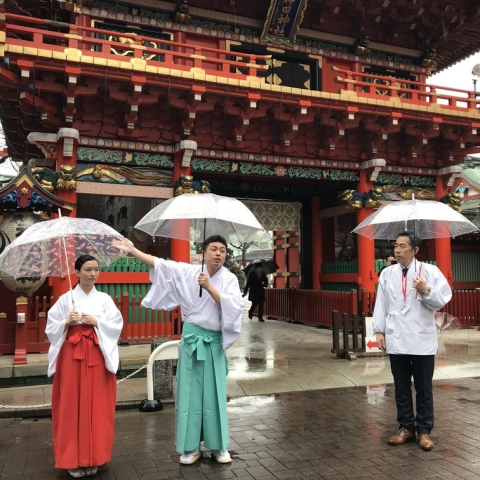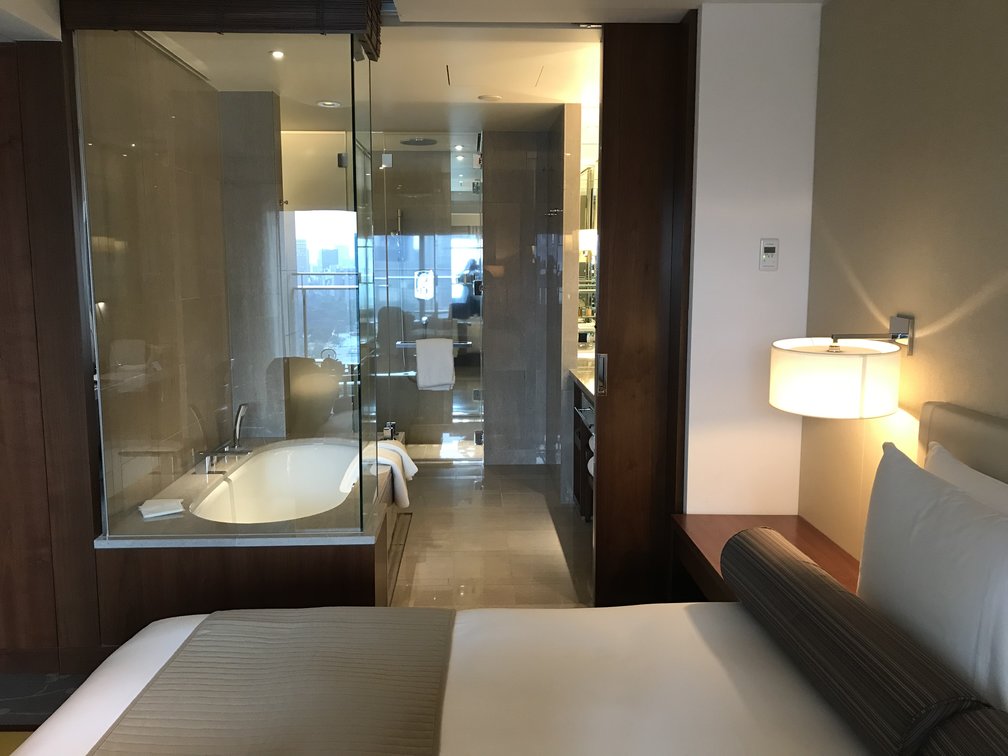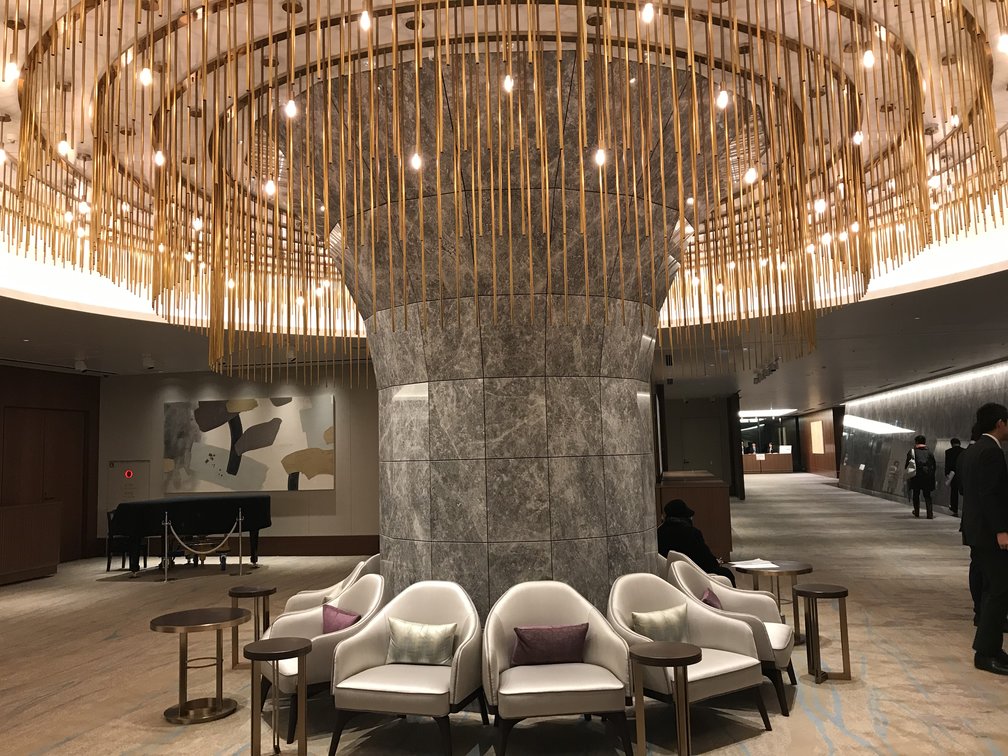Tradition and Innovation Meet in Tokyo Marunouchi — Your Group Can, Too

Tokyo, Japan’s capital, is one of the most heavily populated cities in the world. Home to approximately 37 million people, it’s no wonder the city has the modern infrastructure to host such events as the 2020 Olympics.
Yet the city also successfully blends old with new. In the midst of urban areas, you will find tranquil Buddhist temples, such as Sensō-ji, and Shinto shrines, like Kanda Myōjin and Meiji Jingū, all spiritual sanctuaries where people still come to worship and pray for good fortune.
Tokyo is made up of business districts, each of which have their own unique character. Marunouchi is Tokyo’s financial district and home to a number of hotels and venues capable of hosting events of up to 2,000 attendees. The name translates to “inside the circle,” referring to being protected by the outer moat of the palace (Edo Castle).
I recently visited Tokyo Marunouchi as part of a program sponsored by the Japan National Tourism Organization. JNTO hosts “Meet Japan” each year, which introduces international convention decision makers to various destinations within the country.
This year, the group consisted of approximately 30 association event planners and four event industry journalists. We were then broken down into groups of five or six, each of which were sent to two cities to conduct “study tours,” or site visits designed to showcase the unique character of the destination as well as its meeting facilities. My study tour included visits to Yokohoma and Matsue, which I’ll cover in a separate article.
Experience Luxury at The Palace Hotel
 Public transportation is by far the easiest and most cost effective way to get around in Tokyo, and is used by commuters and tourists alike. The Palace Hotel Tokyo is directly connected to the Otemachi subway station and a less-than-10-minute walk from Tokyo Station. The elegant property offers eight multi-purpose function rooms, two meeting rooms and a boardroom spread between two floors.
Public transportation is by far the easiest and most cost effective way to get around in Tokyo, and is used by commuters and tourists alike. The Palace Hotel Tokyo is directly connected to the Otemachi subway station and a less-than-10-minute walk from Tokyo Station. The elegant property offers eight multi-purpose function rooms, two meeting rooms and a boardroom spread between two floors.
Rooms are named after flowers that can be found in the Imperial Palace gardens next door, and can easily host events of up to 1,000 attendees where several breakout rooms are required.
Each multi-purpose room has built-in projectors and screens, wall- and ceiling-mounted speakers, wired LANs, and both wired and wireless internet access. The two largest rooms feature moving projectors, and the hotel also has an industrial lift for installing large-scale exhibits and products.
Sleeping rooms at The Palace are luxurious. They are oversized even by American standards, and feature deep soaking tubs, complimentary tea and coffee, and plenty of power outlets. Many rooms have balconies with views of Wadakura Fountain Park and Imperial Palace Plaza.
Guests have a number of food and beverage options on property, from all-day dining at The Grand Kitchen to restaurants offering French, Chinese and authentic Japanese cuisine. There are also bars, lounges and even a pastry shop featuring fresh-baked delicacies such as melon bread and highly decorative French desserts.
Get Technical in the Largest Ballroom in Marunouchi
 Less than a mile from the Palace Hotel and connected to several public transit lines, Tokyo Kaikan reopened in January after a four-year renovation that resulted in bigger, better event facilities.
Less than a mile from the Palace Hotel and connected to several public transit lines, Tokyo Kaikan reopened in January after a four-year renovation that resulted in bigger, better event facilities.
Constructed in 1922, the building has a rich history spanning royalty and American wartime occupation. After World War II, it served as the American Club of Tokyo until 1952. Then, it became host to an imperial wedding reception, and a formal gathering in honor of Queen Elizabeth and Prince Philip upon their visit to Tokyo in 1975.
The facility has meeting and banquet rooms that can  hold groups of up to 2,000. Opulent chandeliers, floor-to-ceiling windows with magnificent views, built in registration counters, green rooms and secret exits make it well suited for events that include VIPs.
hold groups of up to 2,000. Opulent chandeliers, floor-to-ceiling windows with magnificent views, built in registration counters, green rooms and secret exits make it well suited for events that include VIPs.
Tokyo Kaikan is equipped with the latest in technology. For example, the Rose Ballroom, which is the largest ballroom in Marunouchi, features a built-in projection screen measuring 36 by 20 feet. The screen reaches from the floor nearly to the 23-foot-high ceiling.
The complex, which also contains office space and public shops, houses several restaurants. Every floor has its own kitchen, making catering and food delivery easy. Our group’s final evening party was held in the venue and featured sake tastings, a sushi chef, and a buffet of hot and cold entrees as well as traditional music and dancing.
Host a Large Group at Tokyo International Forum
 Built in 1996, Tokyo International Forum hosts hundreds of conferences, exhibitions, musical performances and other events each year. Centrally located near Tokyo Station, the facility has eight halls or ballrooms, 34 conference rooms, a 16,400-square-foot exhibition hall and a 5,000-seat movie theater, plus restaurants and shops open to the public.
Built in 1996, Tokyo International Forum hosts hundreds of conferences, exhibitions, musical performances and other events each year. Centrally located near Tokyo Station, the facility has eight halls or ballrooms, 34 conference rooms, a 16,400-square-foot exhibition hall and a 5,000-seat movie theater, plus restaurants and shops open to the public.
Some halls are column-free divisible spaces that work for exhibitions or groups needing large classroom-set rooms; others are amphitheaters with stages and acoustics that accommodate anything from lectures to musical performances.
The award-winning design — the building is shaped like a glass boat — is striking, allowing natural light to fill the meeting spaces even on the rainiest of days (as our group experienced).
Sustainability is a top priority for Tokyo International Forum. The facility utilizes renewable energy to reduce CO2 emissions and keeps a daily and yearly tally on its website.
Venues for Smaller Meetings and Special Events
From culture to history, these two Marunouchi event spaces provide unique and memorable settings.
EDO Culture Complex
The EDO Culture Complex centers around Kanda Myōjin, a 1,300-year-old Shinto shrine to three gods. Like the other destinations on this list, it is centrally located, within 5-7 minutes walk from multiple subway lines.
EDOCCO opened in December 2018 with the mission of connecting people and culture while demonstrating how tradition and innovation intersect in Tokyo. The complex offers space for meeting, dining and entertainment. Modern works of art are displayed in each area, including sculptures, paintings and an oversized brocade wall hanging reminiscent of a tapestry.
 Meeting rooms include the Kanda Myōjin hall, which features a cleverly designed stage. When not needed, it is flush with the floor, providing a larger space for receptions. It can even be used this way as a dance floor. This space includes large glass windows with views of the shrine.
Meeting rooms include the Kanda Myōjin hall, which features a cleverly designed stage. When not needed, it is flush with the floor, providing a larger space for receptions. It can even be used this way as a dance floor. This space includes large glass windows with views of the shrine.
The basement-level EDOCCO Studio contains a meeting room with a built in stage. The Studio also offers kimono rentals, shrine ceremonies, traditional Kabuki dance and music, providing immersive educational entertainment experiences. The fourth floor EDOCCO Lounge is a smaller multipurpose space with panoramic views overlooking the city and the shrine.
During our visit, we were treated to a lunch in the Lounge that consisted of all kinds of Japanese treats, from sushi to sakura (cherry) tofu, with a side of oden, a warm “street food” variety of vegetables, fish cake and tofu served in broth. We also tried a warm beverage made from sake lees, which was a somewhat chunky and sweet non-alcoholic drink reminiscent of Mexican horchata.
While we ate, we were entertained by a geisha performing Kabuki and a percussionist who demonstrated all kinds of traditional drums as well as accompanying the theatrical performance. At the end of the performance, we were invited to try out the drums ourselves, and learned that if the horse skin that makes up the surface of the drum is too dry, it will not make enough noise — so performers often have to quickly lick the drum to ensure it is heard.
Nippon Gallery Tabido Marunouchi
Visitors to Tokyo can gain a more in-depth understanding of Japanese culture and history through cutting-edge technology at Nippon Gallery Tabido Marunouchi. The gallery acts as a digital archive, presenting information through interactive exhibits such as a 3D map of Japan.
Stepping into the building, guests are greeted by a high-definition LED wall displaying imagery from different regions throughout the country, transitioning through different seasons. The view is so lifelike, it appears you can step right into the screen.
Within the gallery, exhibits include a projection map of Mt. Fuji; a VR technology gallery takes you behind the scenes of how the VR content is created; and a “tourism kaleidoscope” presents a variety of images that visitors can touch to display additional information.
The Nippon Gallery Tabido Marunouchi also has an event room accommodating up to 100 attendees.
For more information on holding events in Tokyo Marunouchi or other regions in Japan, go here.
Don't miss any event-related news: sign up for our weekly e-Newsletter HERE and engage with us on Twitter, Facebook, LinkedIn and Instagram!


Add new comment